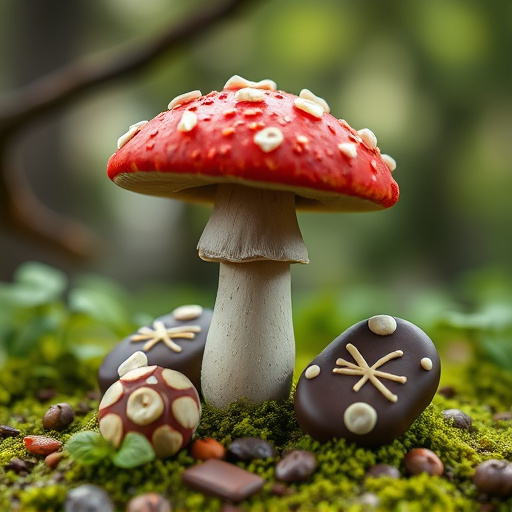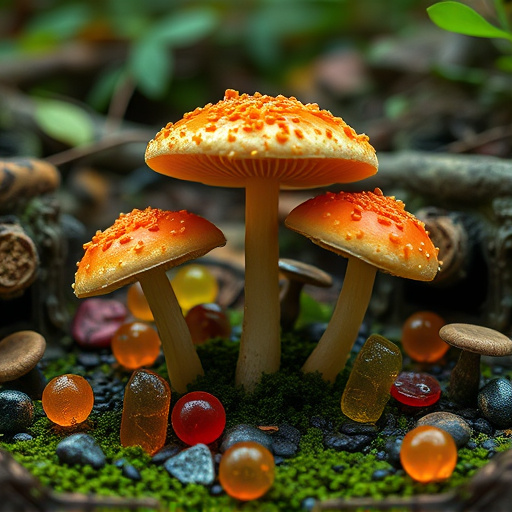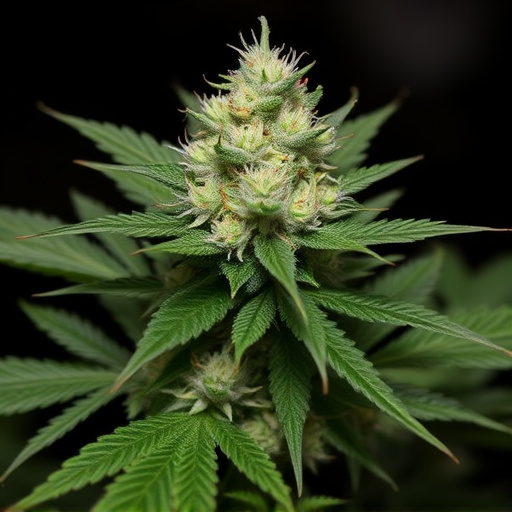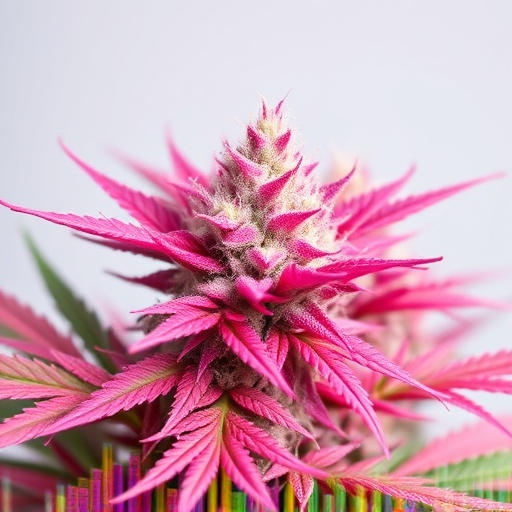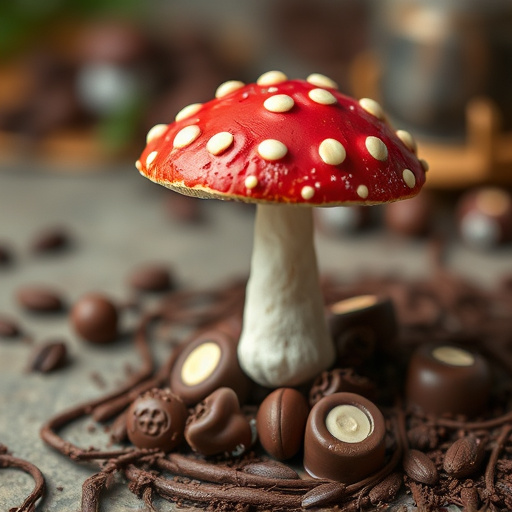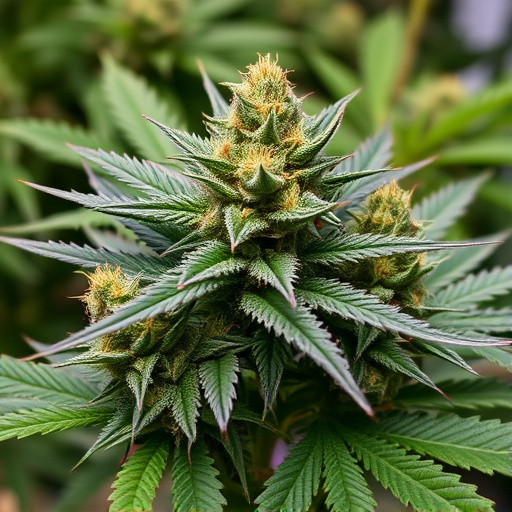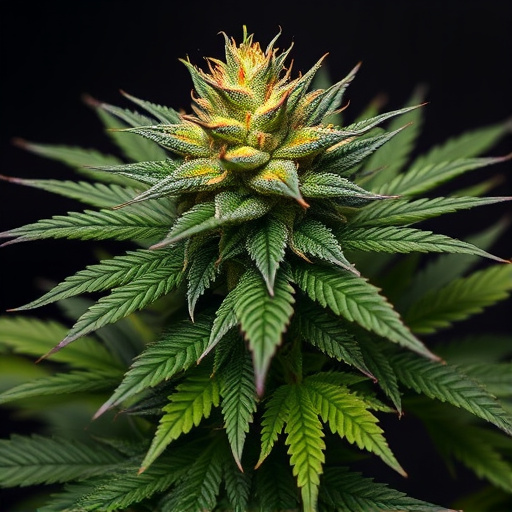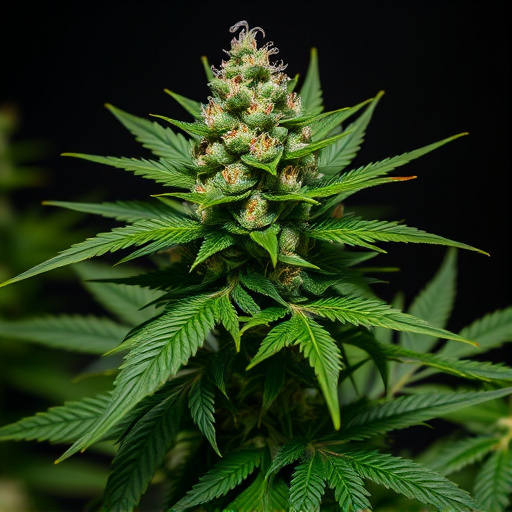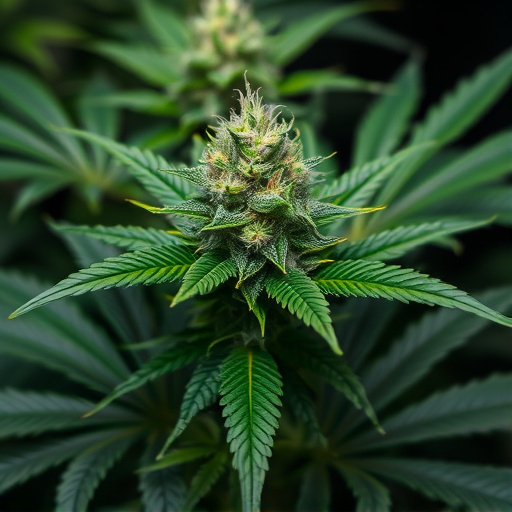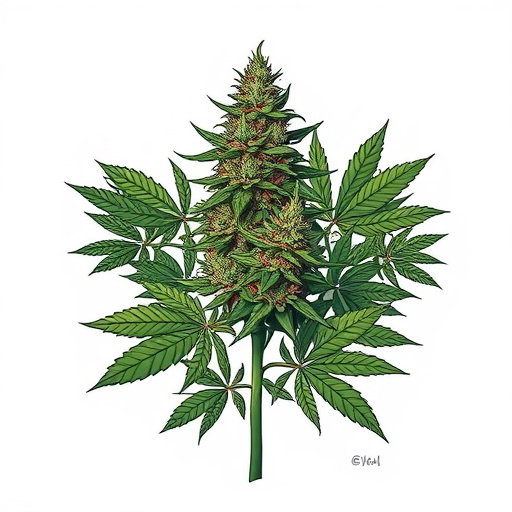The color transformation of cannabis flowers, particularly in indica strains, is driven by pigments like anthocyanin, which accumulate in response to cooler temperatures and lower light intensities. This process results in vibrant purples, blues, oranges, and reds, enhancing both visual appeal and potential therapeutic benefits sought by users. Cultivators can manipulate environmental conditions to create specific color profiles, leveraging the natural metabolic shifts that occur as cannabis matures from green to striking hues, with indica strains often displaying more intense changes due to genetic predispositions.
Discover the enchanting transformation of cannabis flowers as they change color, a process driven by intricate molecular mechanisms. This article explores the captivating journey from green to vibrant hues, delving into the role of pigments and environmental cues that trigger these visual shifts. Specifically, we focus on the unique characteristics of indica cannabis strains, revealing how external factors influence their distinctive color palette. Uncover the science behind this natural marvel and gain a deeper appreciation for the diverse beauty of cannabis.
- The Role of Pigments in Cannabis Flower Color Change
- Environmental Factors Influencing Indica Cannabis Strains' Color
- Understanding the Science Behind Cannabis' Visual Transformation
The Role of Pigments in Cannabis Flower Color Change
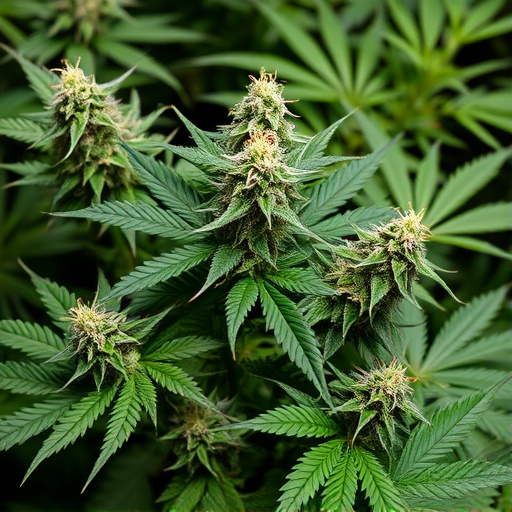
The color transformation in cannabis flowers is a fascinating process, largely governed by pigments. These pigments play a pivotal role in the visual appeal and potential therapeutic benefits associated with different indica cannabis strains. As the flowers mature, specific pigments emerge and dominate, leading to the range of colors we see, from vibrant purples and blues to rich oranges and reds.
One key pigment responsible for these color changes is anthocyanin, a reddish-purple compound that accumulates in the outer layers of the flower during late stages of development. Indica strains, known for their distinct floral characteristics, often exhibit higher levels of anthocyanins, contributing to their intense coloration. This natural dye not only adds aesthetic value but may also indicate potential medicinal properties sought by users of indica cannabis strains.
Environmental Factors Influencing Indica Cannabis Strains' Color
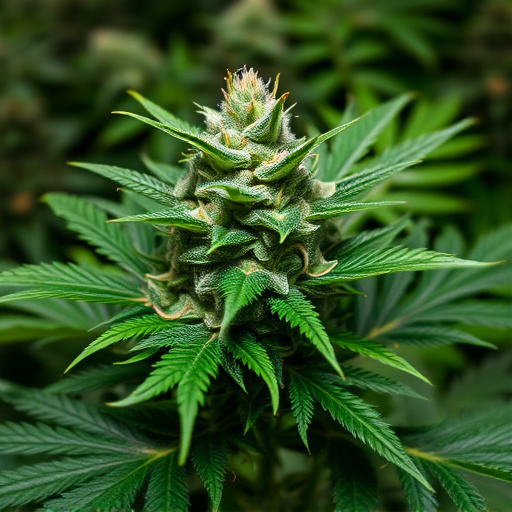
The color transformation in cannabis flowers, particularly in indica strains, is a fascinating process heavily influenced by environmental factors. During its growth cycle, these plants undergo significant physiological changes, and the environment plays a pivotal role in determining their final hue. Factors such as temperature, light intensity, and duration of daylight all contribute to the development of vibrant colors, often ranging from deep emerald green to rich purples and even blues.
For instance, cooler temperatures and lower light intensities can promote the production of anthocyanins, pigments responsible for red, purple, and blue hues. This is why indica strains grown in colder climates or during shorter daylight hours may exhibit these distinctive colors earlier in their flowering stage. Understanding these environmental cues is crucial for cultivators aiming to produce specific color profiles in their indica cannabis strains, ensuring a visually appealing and potentially more desirable product for consumers.
Understanding the Science Behind Cannabis' Visual Transformation

Cannabis flowers undergo a remarkable transformation during their growth cycle, changing color from verdant green to vibrant hues of orange, red, and purple. Understanding this process involves delving into the science behind cannabis’ visual evolution. The shift in color is primarily driven by changes in chlorophyll levels as the plant prepares for flowering. Indica cannabis strains, known for their soothing and sedative effects, often exhibit more pronounced color changes due to genetic predispositions that enhance pigment production.
As the cannabis plant matures, its focus shifts from photosynthesis to reproductive efforts. This transition results in a decrease in chlorophyll synthesis, allowing other pigments—like carotenoids (responsible for orange and yellow colors) and anthocyanins (creating shades of red and purple)—to become dominant. These pigments play a crucial role in attracting pollinators and protecting the delicate flowers from environmental stressors. Thus, the changing colors signal not just an aesthetic transformation but also a strategic adaptation for survival and reproduction.
Cannabis flower color change is a fascinating process, driven by a combination of pigments and environmental cues. As we’ve explored, understanding these factors—from the role of anthocyanins and carotenoids to environmental influences on indica cannabis strains—is key to appreciating the diverse colors and nuances found in this plant. Whether it’s the deep blues and purples of certain indicas or the warm hues of others, each color tells a unique story about the plant’s growth and adaptation. By delving into these scientific aspects, we gain a deeper appreciation for both the beauty and complexity of cannabis flowers.
